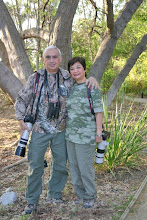Why aren’t there so many songs about rainbirds? Maybe it’s because not too many people go birding in the rain. Surely these feathered creatures come out even when there’s a downpour, don’t they?
My wife and I decided to make that rainbird connection one gloomy Tuesday morning. And painfully discovered why there weren’t many stories about pluvial avian activities.
Yes, we saw some birds, most of them when we had just about given up after three hours of fruitless searching. In one particular ricefield were a lone Little Egret patiently hunting for food and a Cinnamon Bittern praying for a little sunshine. Wood Sandpipers were completely oblivious of the intermittent rain.
And yes, we saw (but unable to photograph) the Pheasant-tailed Jacana that fellow birder, Maia Tanedo, saw the week before.
And yes, we saw (but unable to photograph) the Pheasant-tailed Jacana that fellow birder, Maia Tanedo, saw the week before.
In the end, the rainbird connection, though disappointing at times, can be a source of inspiration to dreamers, birders and me.














